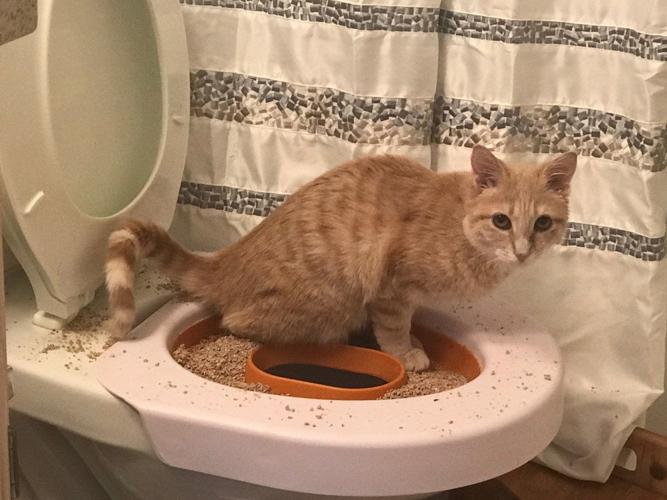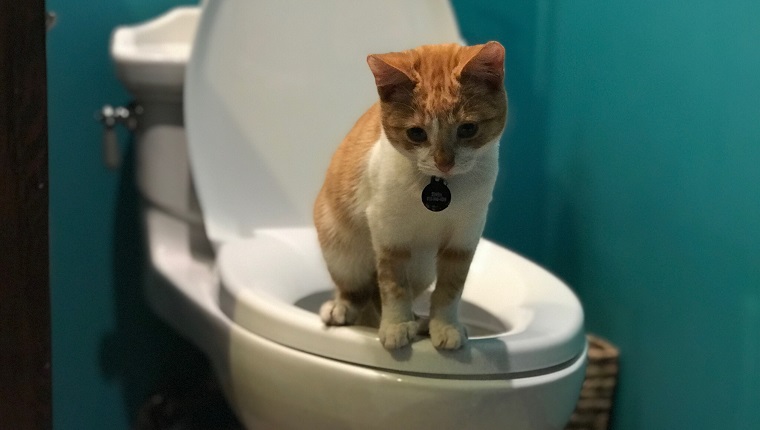Reasons Flushing Cat Poop Down Your Toilet Can Cause Problems - Recommendations for Proper Disposal
Reasons Flushing Cat Poop Down Your Toilet Can Cause Problems - Recommendations for Proper Disposal
Blog Article
Presented here in the next paragraph you might get a lot of great details related to Can You Flush Cat Poop Down The Toilet?.

Intro
As pet cat proprietors, it's important to be mindful of just how we deal with our feline good friends' waste. While it may appear convenient to purge pet cat poop down the commode, this method can have detrimental effects for both the setting and human health and wellness.
Ecological Impact
Flushing feline poop introduces hazardous virus and parasites right into the water, positioning a substantial risk to aquatic ecological communities. These contaminants can adversely impact marine life and concession water quality.
Health and wellness Risks
Along with ecological problems, flushing cat waste can likewise present wellness risks to human beings. Pet cat feces may include Toxoplasma gondii, a parasite that can cause toxoplasmosis-- a possibly extreme health problem, especially for pregnant women and individuals with damaged body immune systems.
Alternatives to Flushing
Thankfully, there are more secure and extra accountable ways to dispose of feline poop. Consider the complying with alternatives:
1. Scoop and Dispose in Trash
One of the most typical technique of taking care of feline poop is to scoop it into a biodegradable bag and throw it in the trash. Make certain to use a devoted clutter inside story and dispose of the waste without delay.
2. Use Biodegradable Litter
Opt for eco-friendly pet cat litter made from products such as corn or wheat. These trashes are environmentally friendly and can be securely taken care of in the garbage.
3. Hide in the Yard
If you have a lawn, think about burying pet cat waste in a marked area away from veggie yards and water resources. Make sure to dig deep enough to prevent contamination of groundwater.
4. Install a Pet Waste Disposal System
Buy a pet dog waste disposal system especially designed for feline waste. These systems make use of enzymes to break down the waste, minimizing smell and environmental impact.
Verdict
Accountable pet possession extends beyond giving food and shelter-- it likewise includes correct waste monitoring. By avoiding flushing pet cat poop down the toilet and choosing alternate disposal approaches, we can reduce our environmental impact and safeguard human wellness.
Why Can’t I Flush Cat Poop?
It Spreads a Parasite
Cats are frequently infected with a parasite called toxoplasma gondii. The parasite causes an infection called toxoplasmosis. It is usually harmless to cats. The parasite only uses cat poop as a host for its eggs. Otherwise, the cat’s immune system usually keeps the infection at low enough levels to maintain its own health. But it does not stop the develop of eggs. These eggs are tiny and surprisingly tough. They may survive for a year before they begin to grow. But that’s the problem.
Our wastewater system is not designed to deal with toxoplasmosis eggs. Instead, most eggs will flush from your toilet into sewers and wastewater management plants. After the sewage is treated for many other harmful things in it, it is typically released into local rivers, lakes, or oceans. Here, the toxoplasmosis eggs can find new hosts, including starfish, crabs, otters, and many other wildlife. For many, this is a significant risk to their health. Toxoplasmosis can also end up infecting water sources that are important for agriculture, which means our deer, pigs, and sheep can get infected too.
Is There Risk to Humans?
There can be a risk to human life from flushing cat poop down the toilet. If you do so, the parasites from your cat’s poop can end up in shellfish, game animals, or livestock. If this meat is then served raw or undercooked, the people who eat it can get sick.
In fact, according to the CDC, 40 million people in the United States are infected with toxoplasma gondii. They get it from exposure to infected seafood, or from some kind of cat poop contamination, like drinking from a stream that is contaminated or touching anything that has come into contact with cat poop. That includes just cleaning a cat litter box.
Most people who get infected with these parasites will not develop any symptoms. However, for pregnant women or for those with compromised immune systems, the parasite can cause severe health problems.
How to Handle Cat Poop
The best way to handle cat poop is actually to clean the box more often. The eggs that the parasite sheds will not become active until one to five days after the cat poops. That means that if you clean daily, you’re much less likely to come into direct contact with infectious eggs.
That said, always dispose of cat poop in the garbage and not down the toilet. Wash your hands before and after you clean the litter box, and bring the bag of poop right outside to your garbage bins.
https://trenchlesssolutionsusa.com/why-cant-i-flush-cat-poop/

We had been guided to that write-up on How to Dispose of Cat Poop and Litter Without Plastic Bags from an associate on another web page. Loved our entry? Please share it. Help another person find it. We appreciate reading our article about How to Dispose of Cat Poop and Litter Without Plastic Bags.
Call Today Report this page